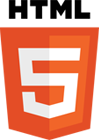Base User Creation

Multiple users may need to be created for the website build. The top level of the user is the host, super admin, the supreme ruler of the site. This person will be able to create the rest of the initial users who will help build. These users may only need access to specific places on the site for different reasons and limiting access can help avoid potential problems down the road. Different initial roles may include other administrators, editors, authors and registered users.
Template Adjustments

Choosing a base theme to build off of can give a nice head start in the process. Simple sites from reputable developers may help avoid any obstacles such as software compatibility. Some changes will need to be made to the chosen theme. Updates to the PHP, ASPX and/or HTML files of default site’s theme may be needed to create locations for content or other features.
Navigation & Sitemap Architecture

A well arranged menu and hierarchy of webpages should be a stress free environment for users to get the information they need. If this isn’t a brand new site, redirects will need to be implemented to resolve any broken links.
Content Migration

Moving the content of the old site to the new site can include the pages, text, images and video which will form with the new layout. Decisions will need to be made with the client to ensure each page is as envisioned. Placement of content can change and additional content may be needed.
CMS

Content Management Systems are the best way to keep content organized on a website. The ease of use allows information to be placed in specific locations. A hierarchy of roles/permissions allow the sites information to be displayed or consumed as access is granted.
WP

WordPress has many benefits if you’re on a budget, especially with the low cost or free plugins and themes they offer. Customizing free themes and utilizing the built in features the packages are accessible to modification of the CSS and PHP files. Most of the free plugins and themes have an advanced version which include more features but usually comes with a cost. As WordPress has much use for blogs, it has a built-in article manager, providing access for authors to create posts and organize the posts into categories separated throughout the site. Some of the plugins, including image galleries, rotators, forms and html content can be displayed in widget areas in specific areas of the site but can require more knowledge of HTML, CSS and PHP. One downfall of WordPress is it’s file management system. When uploading media, the files go into one folder which can make finding media difficult. Of course there is a plugin which can be installed to fix this issue.
DNN

DotNetNuke is a platform I have the most experience with. It is great for organizations that have secured content requiring users to login. The user integration through external databases can be used through memberships, roles and products. DNN9 is the latest release which has had many changes which has simplified the administrative dashboard and trimmed the fat off the platform which has improved loading times greatly. Different modules/types of content can be set effortlessly inside of the theme’s modules placement areas. The article management system does not come with the platform out of the box but there are many modules that can be purchased. I recommend EasyDNN News as well as DigArticle.
Drupal

Drupal is similar to the WordPress Setup and uses PHP. It has been a few years since I have used the platform since we have migrated the site to DNN to make content and features managed with ease.
Blogger

Blogger is a great tool to use as it is hosted by Google, is used to create blog articles. With Google hosting the website, there are many positive features but also has it’s limitations. One of the positive sides of using Blogger is better SEO. Your “main” website can always be linked from the articles that are posted providing positive back-links. Limitations include the support supplied from Google for this platform which mostly includes forums on issues that cannot be resolved. For example, if an other is removed from the account, those articles cannot have the author be changed to another that is still on the account.
Responsiveness

In 2014 browsing on a mobile device became more popular than using a desktop machine. Using media queries the site’s layout changes based on the size of the window. This can make the website’s appearance display flawlessly from 27″ monitor to an iPhone 4. The horizontal menus collapse into an accordion and utilize a hamburger button to open and close.



